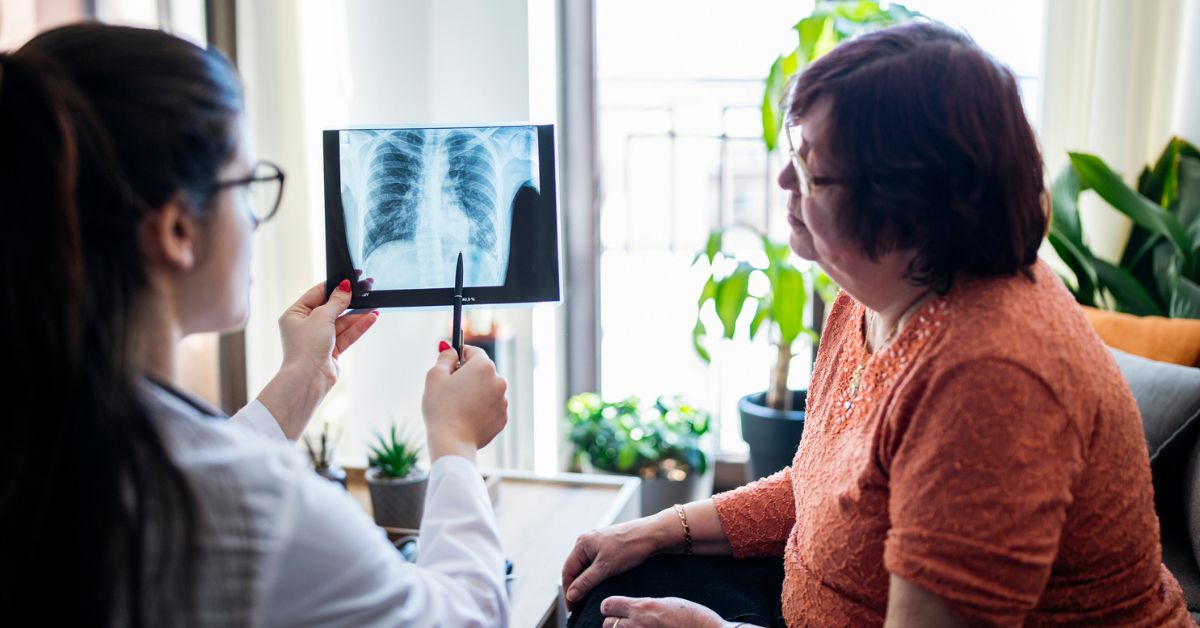
What To Know About Lung Cancer in Nonsmokers
-
Plus, a few ways to lower your risk
Without a doubt, smoking is the No. 1 cause of lung cancer. But as many as 15% of men and 50% of women who are diagnosed with lung cancer have never smoked.
It’s often not possible to know why an individual nonsmoker develops lung cancer. But certain risk factors may increase those chances.
“Except for smoking, the biggest risk factors are occupational and environmental exposures,” said Rohit Kumar, MD, a pulmonologist at Fox Chase Cancer Center.
Here’s a closer look at these other lung cancer risk factors:
Radon gas
Radon is the second-leading cause of lung cancer. This invisible gas naturally occurs in soil and rocks, including those in our region, Dr. Kumar noted. Radon can seep into homes and build to unhealthy levels.
Asbestos exposure
Asbestos is a mineral used in products such as insulation, fireproofing, and automobile brakes. Lung cancer can develop decades after someone is exposed to asbestos fibers on the job, Dr. Kumar said. (Asbestos exposure also can cause mesothelioma, cancer of the lining of the chest.)
Workplace heavy metals
People who breathe in metals at work may have an increased risk of lung cancer. These include beryllium, cobalt, arsenic, and silica.
Diesel exhaust and other air pollution
Some of the most significant evidence that inhaling diesel exhaust causes lung cancer comes from European studies, Dr. Kumar noted. “They found a significant association between particulate air pollution and the incidence of lung cancer,” he said.
Secondhand smoke
Breathing other people’s tobacco smoke may cause nearly 7,000 lung cancer deaths per year.
Family history
Cancer in families can be related to gene mutations. One example is a mutation in the epidermal growth factor receptor gene. People with lung cancer who haven’t smoked are more likely to have cancers caused by those mutations—and that can affect treatment. For instance, these types of lung cancer can often be treated with targeted therapy—often in pill form—rather than chemotherapy.
Other health conditions
People with certain chronic lung diseases, like interstitial lung disease or pulmonary fibrosis, may be more prone to developing lung cancer. In addition, the chances of getting lung cancer may be higher among people with uncontrolled HIV (human immunodeficiency virus) infections, as well as those with HPV (human papillomavirus) infections.
Radiation exposure
Some radiation treatments may increase the risk of lung cancer later in life. One example? “Young people who, unfortunately, developed lymphoma when they were in their younger 20s and got whole chest radiation,” Dr. Kumar said.
Take preventive steps
Having one or many of these potential risk factors does not mean you’ll get lung cancer. Still, in addition to not smoking, here are some steps you can take to reduce your risk.
Test your home for radon. “It’s an easy thing to do,” Dr. Kumar said. You can hire a radon tester or do it yourself with a home test kit sold in stores. If your home has high radon levels, you can take steps to reduce them. For example, some companies install fans to vent radon from homes.
Limit your exposure to carcinogens. If you work around chemicals, “it’s important to adhere to the safety guidelines that OSHA recommends,” Dr. Kumar said. And try your best to avoid breathing secondhand smoke, polluted air, or diesel exhaust.
Choose the lung cancer experts
Our Fox Chase Never Smoker Lung Cancer Clinic specializes in the specific treatment needs of those who have never smoked or smoked lightly, as well as those whose lung cancer is caused by certain gene mutations.
To schedule a consultation with the experts at Fox Chase, call 877.627.9684 or request an appointment online.
